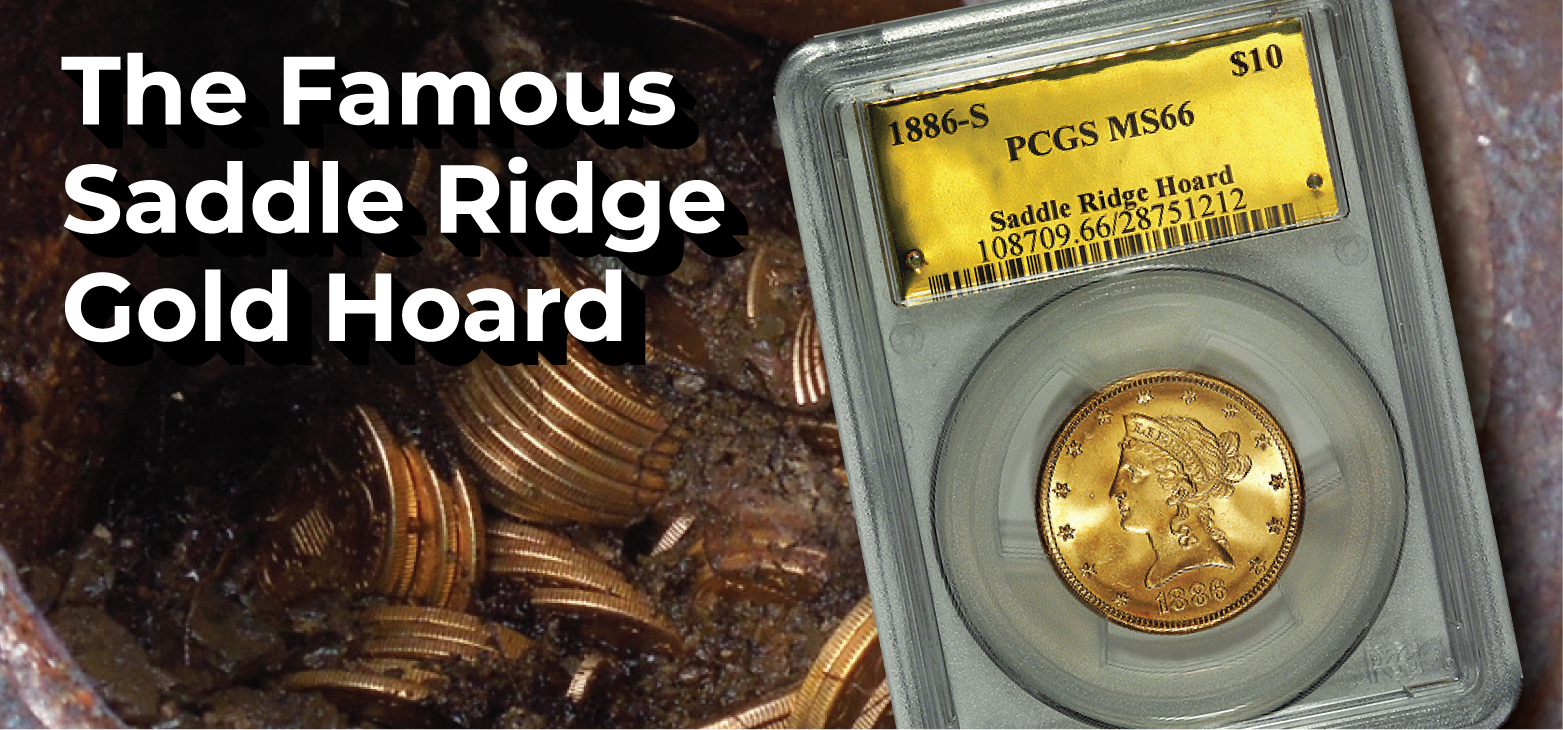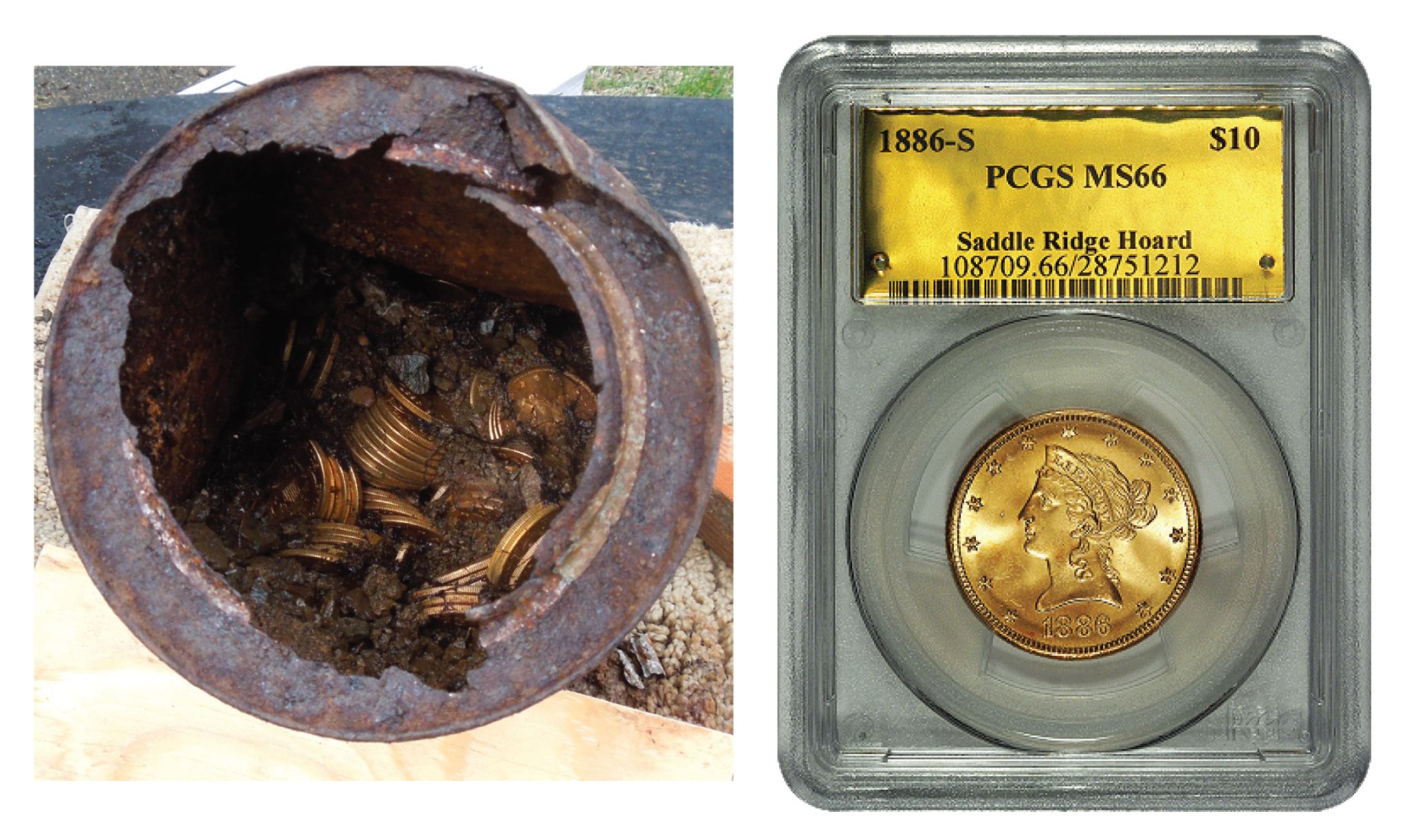The Famous Saddle Ridge Gold Hoard
Post by: Walt Durham
in Gold

The Saddle Ridge Gold Hoard is a collection of 1,427 gold coins discovered in California in 2013 by a couple while walking their dog. The coins dated back to the 1800s and were found in eight rusty cans buried on their property in the Sierra Nevada foothills. The total face value of the coins is over $27,000, but their actual value is estimated to be around $10 million due to their rarity and historical significance.
The hoard includes coins from different mints and denominations, including $5, $10, and $20 gold pieces. Many of the coins are in uncirculated condition, which means they were not circulated among the general public and are in excellent condition. Some of the coins are also considered "pattern" coins, meaning they were produced as a test or trial piece and were not meant for circulation.

The Saddle Ridge Gold Hoard is considered to be one of the most significant discoveries of gold coins in American history. The coins provide a glimpse into the history of the California Gold Rush and the monetary system of the United States during the late 1800s. The discovery of the hoard also sparked a renewed interest in coin collecting and American numismatics.
The couple who discovered the hoard decided to remain anonymous and have not revealed the exact location of their discovery. They have chosen to sell the coins through a series of auctions and private sales. Many of the coins have been sold to museums and private collectors, ensuring that they will be preserved for future generations to study and appreciate.
The discovery of the Saddle Ridge Gold Hoard is a reminder of the rich history of the American West and the enduring allure of gold. It also serves as a reminder that treasures can be found in unexpected places and that sometimes, the most remarkable discoveries are made by accident.
BULLION
GOLD
GOLD COIN
GOLD COIN
HISTORIC GOLD
GOLD EAGLE
HISTORIC
LIBERTY GOLD
LIBERTY HEAD
LIBERTY
PRE-1933
PRE-1933 GOLD
EAGLE
EAGLE
SILVER
SILVER COIN
SILVER EAGLE
SILVER
PROOF
PROOF COIN
PALLADIUM
PALLADIUM EAGLE
PALLADIUM COIN
PLATINUM
REVERSE PROOF
INDIAN HEAD
INDIAN GOLD
INDIAN
LAST YEAR OF ISSUE
FIRST YEAR OF ISSUE